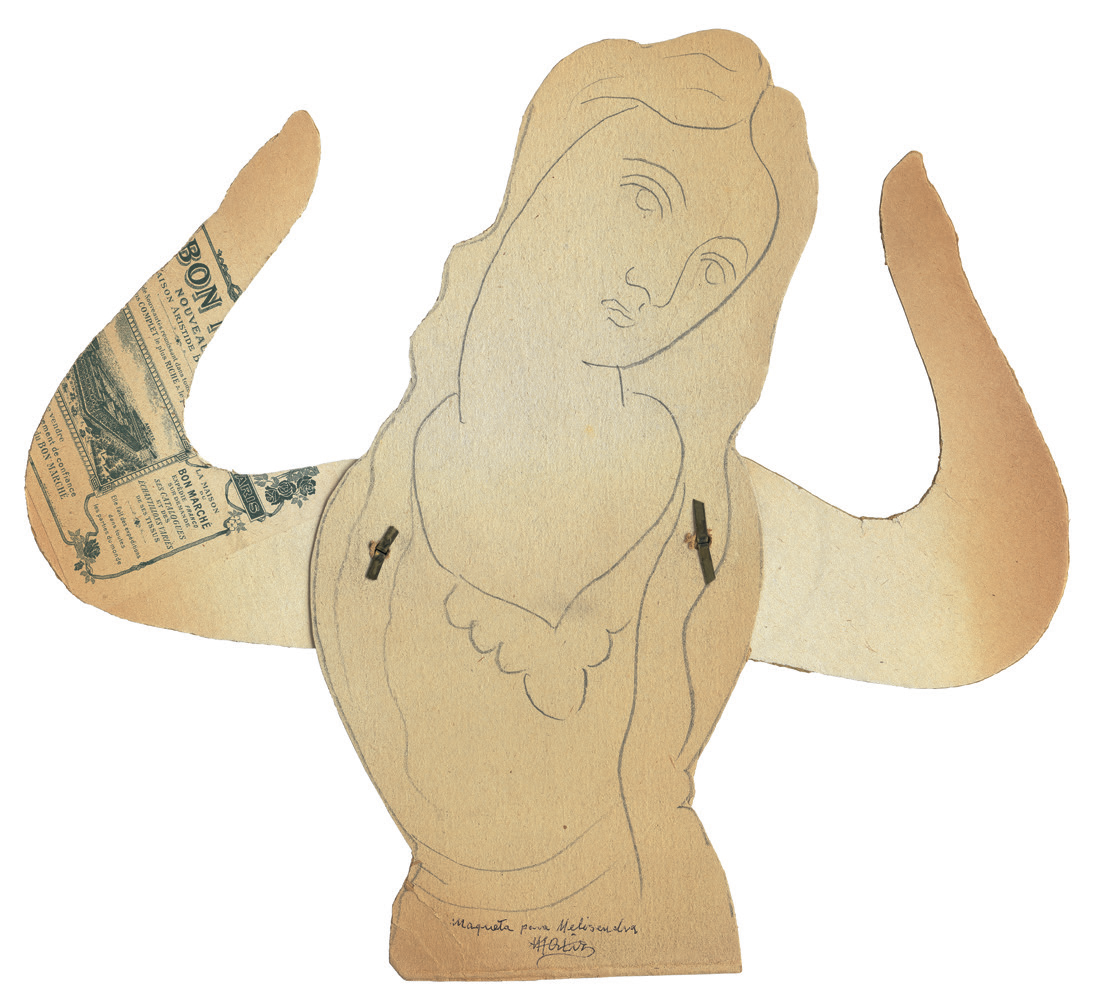

Plantilla articulada de Melisendra para la representación en Ámsterdam, 1926. Archivo Manuel de Falla (Granada). © Manuel Ángeles Ortiz, VEGAP, Madrid, 2023.
By creating El retablo de maese Pedro, Falla sought to express a new artistic ideal aligned with the neoclassical avant-garde tendencies that emerged in interwar Europe. The result was a highly personal and innovative chamber opera, immersed in the literature and music of Spain’s past yet far removed from what Igor Stravinsky called the "folkloristic venture".
However, El retablo de maese Pedro was (and still is) a difficult work to stage, as Falla —com-mitted to that ideal— did not give much thought to its practical sustainability. For one thing, per-forming this work is complicated by the theatre-within-a-theatre device: the audience watches Don Quixote, who in turn watches a show about the romance between Don Gayferos and Melisendra. Another challenge is the leading role of Trujamán or Master Peter’s Boy, written for a prepubescent voice but technically quite difficult for a child to perform. To further complicate matters, the score called for a harpsichord, an instrument that had been all but forgotten for centuries and was consequently quite hard to find. Today we honour the memories of Fran-cisco Redondo and Antonio García, seises or choirboys from the cathedral of Seville, and the Polish harpsichordist Wanda Landowska for overcoming those difficulties and facilitating the first performances of the work.
